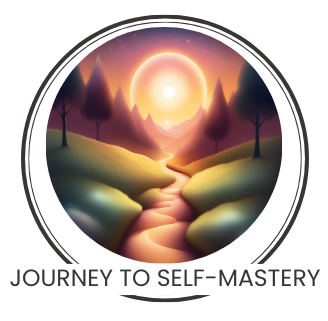
Emotional triggers are basically your psychological buttons, those moments where a certain word, image, or situation just sets something off inside you. These things can make your heart race, your palms sweat, or just mess with your mood totally out of the blue. It’s like your emotions just hit turbo without checking in with you first.
Recognizing these triggers is the first step towards managing them. Think about the times when a conversation starts to heat up or when you react sharply to someone’s comment. These reactions often stem from deeper feelings tied to personal experiences, beliefs, or even upbringing.
So, how do you nail down these triggers in your own life? Start by paying close attention when your emotions spike. Keep a little mental log, or better yet, jot things down. When did you start feeling this way? What were you doing? Who was around? Over time, patterns will start to emerge. Maybe it’s when things feel out of your control or when you’re around certain people.
Another tip is to look for repeated scenarios. If you often find yourself in emotional tailspins under similar circumstances, that’s a huge clue. These patterns highlight what truly sets your emotions off.
Deep down, being aware of your triggers empowers you. It’s like having a personal manual for when things go haywire, helping you navigate those moments smarter, not harder.
Delving Into Emotional Analysis
Once you’ve got a grip on your emotional triggers, it’s time to really understand what’s happening on the inside. Emotions have layers. You’ve got your primary emotions – those big waves of feelings that crash over you instantly. Then there are secondary emotions that often come after, like anger stemming from an initial feeling of disappointment or fear.
Taking stock of your emotions involves recognizing this sequence. One way to do this is by journaling. Yes, it might sound old-school, but putting pen to paper can help clarify what you’re really feeling. Write down what happens after a trigger hits. How do you react? How do those feelings evolve? Seeing this in black and white can bring valuable insights.
Mindfulness techniques are super handy, too. You don’t need a meditation app or a special place. Just practice being fully present during a trigger moment. Notice how your body feels. What thoughts rush through your mind? This awareness creates a space where you can pause and decide how you want to respond, rather than just reacting impulsively.
Analyzing your emotions isn’t always easy, but it’s pivotal for gaining control. When you see the full picture, you move from being swept away by emotions to understanding their purpose. It’s all about figuring out what’s really driving your feelings and learning to steer them in healthier directions.
Approaches to Manage and Respond to Emotional Triggers
So, you’ve identified what sets you off and mapped out your emotional journey. Now comes the next crucial part: managing those responses. When a trigger strikes, it’s easy to feel like you’re spiraling, but there are solid strategies to help you regain control.
One of the best techniques is practicing deep breathing. Sounds simple, but it’s powerful. A few deep breaths can help slow down your heart rate, giving you a moment to pause and collect your thoughts before reacting. It’s like hitting the pause button in a heated moment.
Grounding techniques are great, too. Try focusing on your senses to bring yourself back to the present. Notice five things you can see, four you can touch, three you can hear, two you can smell, and one you can taste. This simple exercise helps shift your focus from emotional chaos to the concrete world.
Cognitive restructuring can also be a game-changer. This means challenging and changing unhelpful thoughts. Next time you catch yourself thinking, “I always mess things up,” reframe it as, “I’m learning and growing from each experience.” This mindset shift can be ridiculously empowering.
Developing resilience through these strategies doesn’t mean you’ll never get triggered again, but it equips you with the tools to handle these moments better. You’re building a skill set that turns emotional turmoil into opportunities for growth and self-discovery.
Consequences of Emotional Suppression

Ignoring your emotions may seem like an easy out, but it can backfire big time. When you push your feelings deep down, it’s like stuffing too much junk into a closet; eventually, it bursts open, usually at the worst possible moment.
Constantly bottling up emotions can take a toll on both your mental and physical health. Anxiety, stress, and even depression can creep in over time. Physically, this can manifest as tension headaches, digestive issues, or a constantly knotted stomach.
People often suppress emotions in the hope that they’ll just ‘get over it,’ but emotions don’t just vanish. They simmer, and this can lead to unexpected outbursts or a pervasive numbness that robs you of joy and excitement.
The key to handling this is finding healthy outlets. Whether it’s talking to someone you trust, writing it out, or even seeking professional help, expressing what’s inside is crucial. It releases the pressure and can provide perspective.
Real-life stories and case studies highlight how destructive long-term suppression can be, often showing that addressing emotions head-on leads to healthier, happier lives. Facing your emotions isn’t easy, but it’s a brave step towards personal freedom and well-being.

Great Post, and I understand that understanding your triggers and how to handle them is very important. I am at the age now where stress and anxiety can cause major harm on your body. So at this stage of my life, I recognize my triggers, take a few deep breaths, say a few “Woo Zahs” and go about my business. And I understand you completely how suppressing can cause harm also. I don’t not hold anything in anymore. I say what I have to say in a calm manner and get it all my chest. In my younger days, I held it in, not anymore. Thanks for a great article on this topic. God bless and take care…
“Woo Zahs”???? 🙂 Thanks for the comment Larry. Keep taking care of yourself!
Hello Herman!
This article really made me reflect on how much our emotional triggers influence our reactions. It’s interesting to think about how much of our emotional responses are learned or conditioned over time.
Have others found that understanding their triggers has helped them manage their reactions better? What strategies have you used to reframe your emotional responses when triggered?
I’m curious about how different people approach this self-awareness and how it’s impacted their interactions with others!
Angela M 🙂
Hi Angela! For me, the journey to understanding my emotional triggers hasn’t been an easy and its not even close to being over. I use different strategies depending on the situation that I am in. I think of these strategies as part of my emotional toolkit. Sometimes its taking the time to listen to my body and what its telling me about a certian situation and how I am responding. For example, I know that when my pulse is going fast, something is obviously going on and its time to either start deep breaths to get through the situation or if possible, get out of that situation. Other times, its just sitting down and asking myself questions about what I am feeling, what brought those feelings on, and trying to peel back the onion on what really triggered me. Was it the customer being angry at me for something I have no control over? Is it my reaction to the customer’s negative perception of me despite me doing what I can to help them? Maybe what I am feeling is not anger towards the customer but maybe its frustration over not being able to “fix” the situation. There are other times when journaling is the appropriate tool and I can just unload with pen and paper. These are the tools that resonate me. People has to experiment and find out what works best for them. Thank you for commenting.
Emotional triggers are like roadmaps to our inner worlds, guiding us to deeper self-awareness. This post brilliantly breaks down the process of recognizing, analyzing, and managing triggers, offering practical tools like journaling, mindfulness, and cognitive restructuring. The emphasis on transforming emotional turmoil into growth opportunities is empowering. It’s a great reminder that understanding our emotions not only improves our reactions but also enhances our overall well-being. How do you personally approach identifying and handling your triggers? Would love to hear your take!